Tuberculosis in the Omo
Omo River Basin
|
NEW ESRI StoryMaps: What's On Our Shelves & NWNL Song Library & No Water No Life ESRI |
Omo River Basin
Rea Tschopp
Bovine veterinarian with Swiss Tropical Institute and Armauer Hansen Research Institute in Ethiopia
Alison M. Jones
NWNL Director and Photographer
All images © Alison M. Jones. All rights reserved.
NWNL Hello Rea, let’s start with your description of your background in wildlife and what you’re doing in the Omo.
REA TSCHOPP I’m a Swiss wildlife veterinarian in Ethiopia doing my Ph. D. research on bovine tuberculosis. I am funded by the European Union CONTRAST Project in the UK. I also work directly for the Swiss Tropical Institute in close collaboration with Ethiopia’s Armauer Hansen Research Institute.
I am looking at the epidemiology of how bovine tuberculosis is transmitted between cattle to humans with a wildlife component – a triangular interface in Ethiopia’s highlands and lowlands. As well, we try to study the ecosystems in these different areas. Finally, we try to assess the economic impact of the disease, for the humans as well for the livestock sector. Our study sites are in the highlands, along the Rift Valley and the Bale Mountains, and in the southern Omo Valley.
We think we’re the first data collectors looking at what seems to be a bigger problem in the lowlands than in the highlands. That could be because in the lowlands, people have very large livestock numbers and live in very close association with their livestock. In the Omo Valley lowlands we tested the cattle belonging to the Hamar tribe. The Hamar people sleep directly with their livestock. They spend most of their time directly in contact with their livestock.
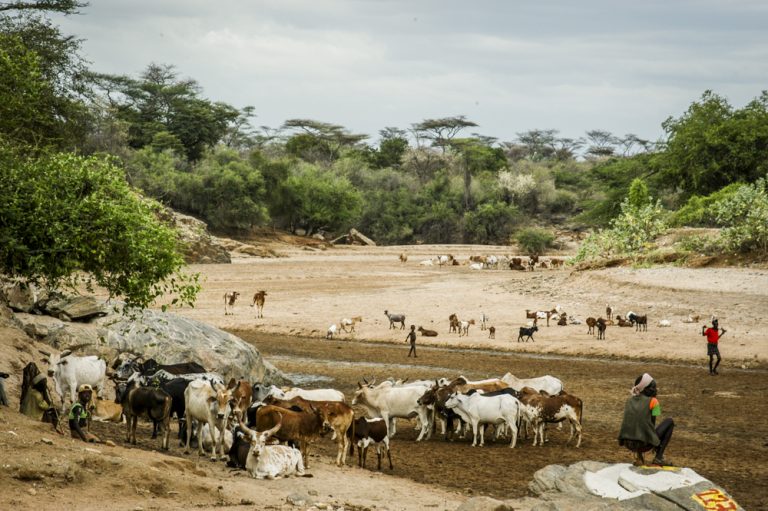
NWNL What do you see as primary uses of the Omo River and its water?
REA TSCHOPP Most importantly is that now, more and more people are coming into areas restricted to wildlife, as they look for pasture and water availability for their livestock. As they move their livestock to find water and pastures, they are going a very, very long distance with their livestock. They can walk for days and days – up to a week – trekking and pushing hundreds of cattle through these areas.
NWNL How often do cattle have to go to water to drink?
REA TSCHOPP This depends on different areas. I ask farmers this question when I interview them. Most go once a day, but just that can involve walking three hours a day to get to the water. In some areas in the Omo, villagers said they’d walk once every two days to the river.
Then, there are parts of their region where water is really scarce. There they carry the water to the cattle, and they lose a lot of animals. Without water, the animals lose a lot of weight and get sick from diseases.
NWNL Do these people also fish in the river? Do they travel on the river? Or do those living in the Omo River Basin just use the river water for human and livestock consumption?
REA TSCHOPP From what I saw, it’s most important to gather the cattle at one spot where there is water. When they come together from different villages, you have hundreds of animals in one spot. That’s how diseases can be transmitted.
NWNL Before we get into some of those challenges of disease, which tribes in the Omo Basin are you working with?
REA TSCHOPP We started to work basically with those tribes in the Jinka area. Then, because we had the impression there were more problems southwards with the more nomadic populations, I started to test cattle of the Hamar population and southward.
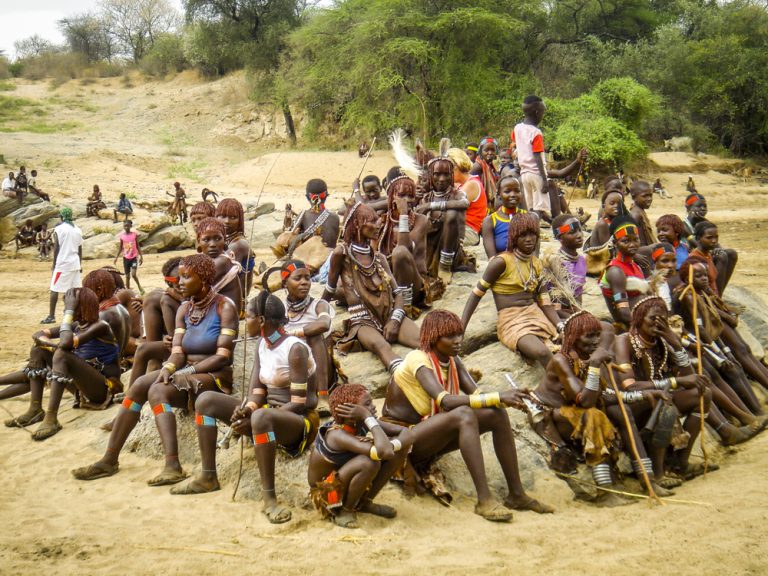
NWNL Do the Hamar have more problems, or do they have more cattle and therefore more problems?
REA TSCHOPP That’s a very interesting question. For sure, the Hamar have a much higher number of cattle. I saw farmers with up to a thousand head of cattle. And they walk around a lot, mixing with other tribes, other villages and other cattle. Thus, they can easily transmit diseases between the herds.
NWNL What diseases do their cattle carry?
REA TSCHOPP Down there, there’s a big problem with Anthrax, with a disease called CCBP [ a chronic form of pneumonia caused by a micro-plasma] and with “black legs,” or Clostridia.
NWNL What are the symptoms of this “black legs” disease?
REA TSCHOPP Probably tuberculosis [TB]. There is a lot of research that has not been done, since these are remote areas. People are not very interested in these areas. It’s far, too far away. Even the vaccines are not reaching these areas, which is sad because you can vaccinate against most of the diseases.
NWNL Are any of these diseases transmitted by water or related to availability of water?
REA TSCHOPP Not directly by water – but again, the fact that cattle gather around, water points is a big problem. We know for example that TB will remain in the soil and the environment for quite a long time. There’s still much research to be done in that area; but, when you have a lot of cattle, scarcity of water and pollution of the water, there is really big possibility that TB will stay longer in that area.
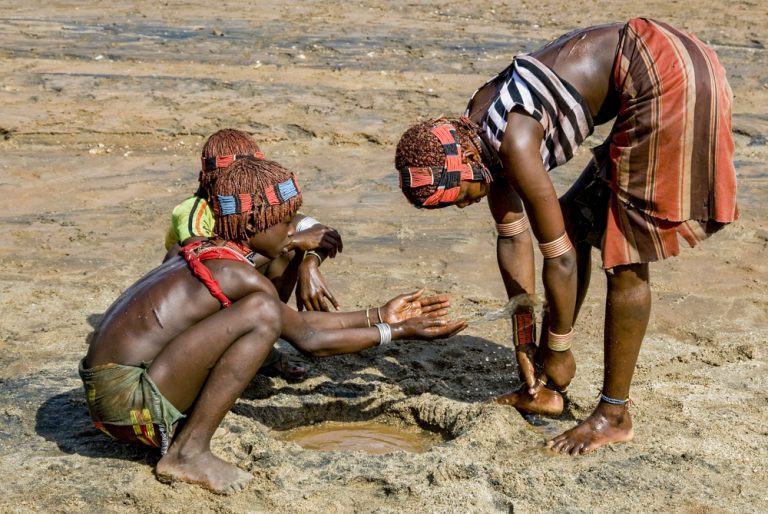
NWNL What is the solution for the Hamar? Can the Hamar change their patterns with their cattle to prevent this gathering and therefore infestation?
REA TSCHOPP Very, very difficult. The best idea I think would be to reduce the cattle numbers. That would definitely be the best thing to do also for the pasture as well, because the area is totally overgrazed by cattle, not only in the Omo Basin River, but all over Ethiopia.
With the high number of Hamar cattle, I don’t think their environment can cope anymore. So, probably the only possible answer is to reduce the cattle. But to reduce the number of cattle, we should provide healthy animals with better productivity. A couple of farmers told me, “I would rather have like two healthy cows who give me a lot of milk, rather than a hundred cows that are useless.”
NWNL What factors are needed for a cow to produce more milk?
REA TSCHOPP First, it depends on the genetic background. For example, local cows usually will give a maximum of half-a-liter to a liter of milk a day. Our exotic breeds in Europe or in the US West give a lot more milk. It depends on which breed, but it can be 18 to 25 liters, which is a lot more than Omo cattle.
NWNL Is there any progress in Ethiopia in promoting stronger breeds of cattle?
REA TSCHOPP Progress in this will occur more around the capital city and big cities like Debre Berhan, Debre Zeyit. Crossing Ethiopian breeds from the West, which give a lot of milk, with the Hamar’s Zebu cattle will increase milk production. But here again, we have another problem because these exotic breeds are far more susceptible to diseases, especially TB.
So, it’s a balance between having better milk production or healthy animals. In the south, there are no exotic breeds, just the traditional Zebu. But the farmers are very, very willing to find a solution, and they talk about their problems. They will say there’s not enough grass, so they have to move further. They would ask me, “What can we do in the future? What could we change?” So, there is a willingness from the side of the farmers.
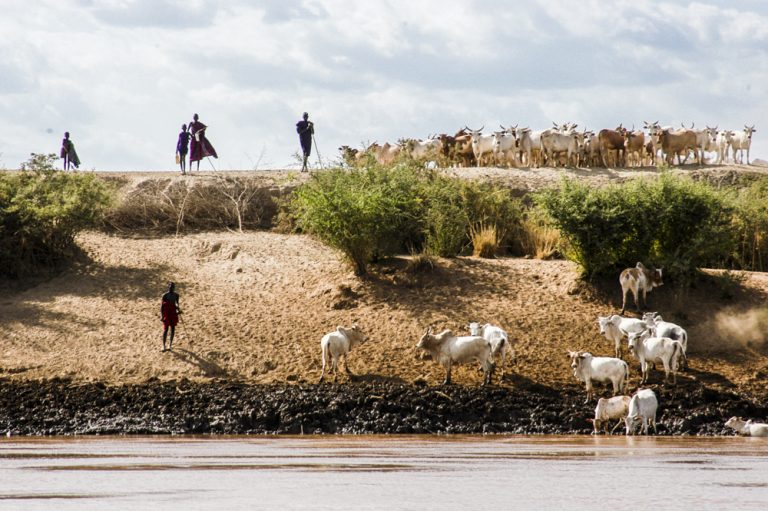
NWNL What impact do you think a reduction in cattle would have on the environment – aside from reducing diseases at the water spots and producing more milk for the local people?
REA TSCHOPP There is a lot of pressure now in the grazing areas. The cattle are over-eating the small surfaces of grazing areas. Furthermore, there is an intensified interface with wildlife over needed space. Thus, local people push the wildlife out because they need that space for the cattle.
NWNL You’ve mentioned the connections between the well-being of wildlife, people, and cattle. Have you observed resulting conflicts?
REA TSCHOPP Usually, the conflicts are over grazing areas and water availability, because they are now greatly reduced in most of the highlands. There, people plant crops for human meals, and completely ignore the cattle. With no pasture left, the cattle push into the Natural Reserves, which pushes the wildlife away. This is also happening now in Omo, and it’s becoming heavily intensified. The Omo population is increasing very fast.
NWNL You have worked with the Hamar. Have you worked with any other tribes, like the Karo?
REA TSCHOPP I’ve just visited two Karo villages. I’ve witnessed their awareness of these problems as they seek solutions. I found a willingness to ask questions and to tell me about the problems.
NWNL That’s positive feedback.
REA TSCHOPP Yes, but I did face an issue with wildlife. I asked, “How do you interact with wildlife?” They said their priority is only cattle.
NWNL What wildlife is in the area of Karo and Hamar country?
REA TSCHOPP Quite a bit of herbivores and gazelles that share the habitat.
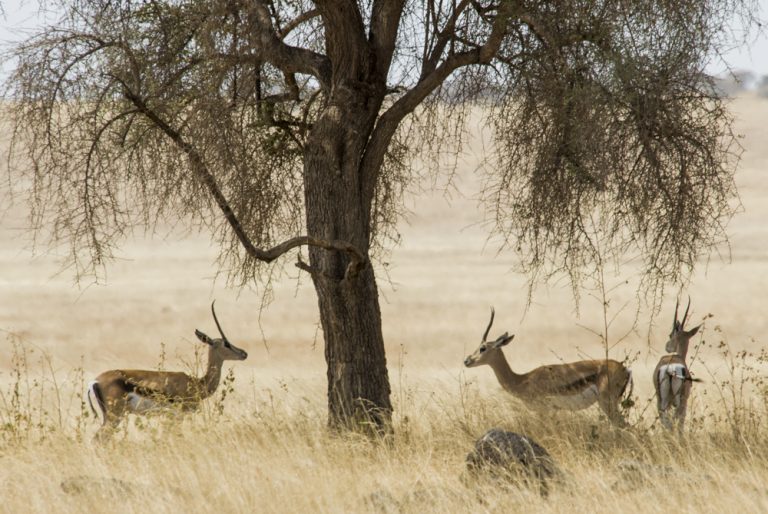
NWNL Do the local people hunt the wildlife?
REA TSCHOPP Yes, I saw a lot of skins.
NWNL What impact does education in these pastoralist communities you’re working with? What percent of the villagers had any education? And if it exists, is it appropriate education?
REA TSCHOPP Regarding the South Omo, no education. I saw maybe one person who went to Jinka for a basic education, but otherwise no.
NWNL How would education impact these communities?
REA TSCHOPP I think we could achieve quite a lot, because they have all these questions. They want to find solutions; and they are ready to listen. We spent quite a lot of time talking with them and explaining the disease, its interface problems, and problems they’ll face in the future if it continues like this. So, I think education can make quite a large impact.
NWNL I suppose there are many unknowns. What about the conflict of time needed in school to obtain that education versus time needed with the cattle? Do they begin to lose their culture? Children in these pastoralist communities are very much part of the work force. Do communities begin to lose their livelihood if children are sent off to school?
NWNL What else would help these remote pastoralists?
REA TSCHOPP Well, there is no infrastructure anywhere for miles and miles and miles, so they’re really far away from anything. For instance if they send kids to school, the kids leave their families for a long time. So, I don’t know. It seems more infrastructure would help, but I’ve never touched that question.
NWNL I’ve talked to some people in Hamar country who say, “If my children go to school, I can’t support myself. I need my children to help with the goats, the cattle.”
REA TSCHOPP Exactly because there are a lot of animals, and the children are the ones milking them. But what those communities really want, for sure, is a better health system surrounding that area. Human health there is a disaster. It’s really bad.
NWNL I know you’re a veterinarian, so I may be pushing you out of your box.
REA TSCHOPP No, no, it’s okay. I’m also linked a bit with human health.
NWNL Okay, then what are the prevalent human health issues and diseases?
REA TSCHOPP There are many skin problems and a lot of nutritional problems. In the villages where I was, the main meals were milk. Once a week, they put a bit of blood in the milk. Milk mixed with blood is their source of protein. Sometimes a bit of cereal that they might find in the market is mixed in.
Animal protein sources occur only when an animal dies. Then they’ll eat the meat. They don’t kill an animal to eat the meat – except for goats sometimes. But otherwise, they wait until the goat or cow dies to eat the meat. But, if an animal dies, it’s mostly because of a disease; and it could be a disease which can be transmitted to humans like anthrax.
NWNL What is the cause of the skin disease issues that you mentioned?
REA TSCHOPP I don’t know. I’ve asked a couple of doctors here, and they didn’t know either. It could also be nutritionally related.
NWNL Are there any water-related diseases? For instance, malaria is a water-related disease because the mosquitoes breed in damp areas.
REA TSCHOPP Yes, and they also have a big problem with sleeping sickness problems down in the Omo.
NWNL That’s from the tsetse flies, so is that water-related.
REA TSCHOPP Yes, because tsetses have to be a close to a humid source as well.
NWNL Let’s get back to malaria for a minute. Is there any malaria prevention happening in that area?
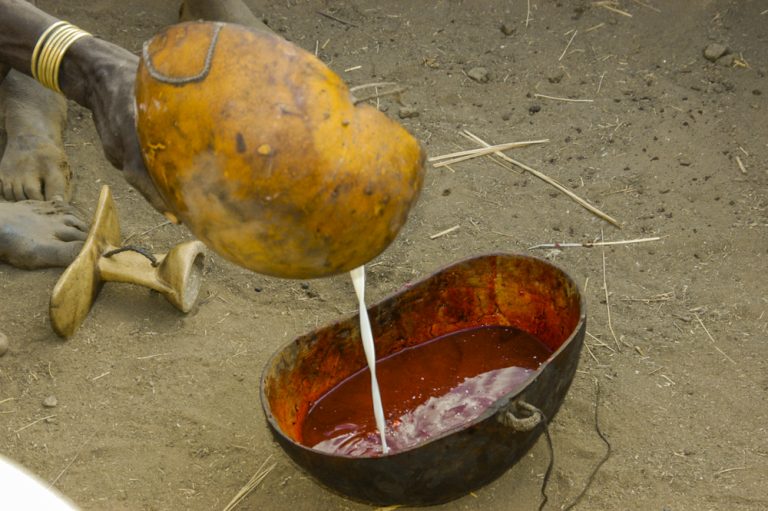
REA TSCHOPP No, not at all for the Hamar.
NWNL Not at all, no netting?
REA TSCHOPP Nothing at all. They sleep outside. They don’t even sleep in huts. They have huts for the young animals to keep them away from predators, but most of the people I saw were just sleeping outside.
My focus was on the big problem of TB. Human TB is a big, big issue.
NWNL What causes TB?
REA TSCHOPP TB is bacillus. It’s actually called micro-bacteria tuberculosis. It goes into your lungs, and the body reacts to try to stop the advance of the bacteria, forming what we call granulomas, which are like little abscesses. If the immune system is strong enough, the body can contain the disease in little granulomas in the lungs. If the person is weak, it can spread all over the body.
Interestingly, in the bovine strain of the TB, can acquire it by drinking the milk of infected animals. That’s how it is transmitted.
NWNL In the dry period, there is a lot of dust in these areas in the southern Omo, does that create more TB? Does it aggravate a tendency?
REA TSCHOPP We don’t know. This environmental issue of TB is not at all investigated. We know there is much more an environmental problem in TB than suspected until now. So, as you said, it may aggravate the lungs making the whole system weak. And dry soil could easily spread the disease as well.
NWNL It seems there is much yet to learn.
REA TSCHOPP Yes, it’s amazing. But it’s sad to see nothing done in these remote areas. The Omo is so far away. When I talk with students or young veterinarians here in Addis Ababa and say we have to go Omo since there is a lot to do there, they don’t want to go there. They don’t trust it.
NWNL Why?
REA TSCHOPP The Omo is too far. It’s too wild, and they’d rather stay in the big cities. It’s a shame because even vaccines will not reach these areas.
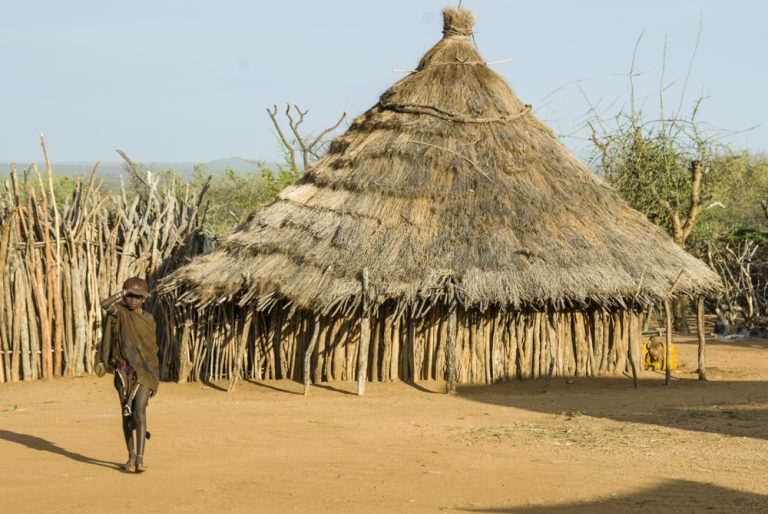
NWNL Is the cultural separation between highland and lowland people just due to distance or is there some racism? I’ve read that some people consider Ethiopia’s two different nations: highlands and lowlands. What have you experienced with that issue?
REA TSCHOPP Well, there are different tribes throughout southern Ethiopia; and the highlanders are very much different. When I talk with students and young researchers, they will say, “I don’t want to go work with the wild people. They are not really Ethiopians like us.” I had even a driver who refused to come with me because he didn’t want to work with these people.
NWNL What will the future be like for pastoralist communities in the Lower Omo?
REA TSCHOPP I believe there is a huge potential in the Lower Omo, a huge potential. But if we are not careful, it will just ….
NWNL Potential for what?
REA TSCHOPP Potential for the land, from the pastoralists’ point of view. It’s not as degraded as it is in the highlands. There’s still good fertile soil. and I think they could do much more with that. But again, there is human over-population, over-grazing, and too many cattle. Yes, there are many issues to solve; but there is a potential there.
NWNL Do you think the traditional cultures can continue to exist living in their traditional ways, their traditional societies?
REA TSCHOPP Honestly, I don’t think for too long. In just the last two years, I’ve seen a big, big change. Maybe not that far south, but starting around Jinka you see the first changes with the Hamar people.
NWNL In what way?
REA TSCHOPP For example, they dress differently now, whereas two years ago when I went into their villages, they were all traditionally dressed, and lived in a traditional way. Now we see more and more people wearing t-shirts and shorts, and carrying plastic bottles — all that within two years. I think it’s moving fast now.
NWNL I know they are all clamoring for plastic bottles and they ask for Highland bottled water. How did they carry their water before there were plastic bottles?
REA TSCHOPP The English called it a calabash. That’s also where they put the milk, which is still transported this way.
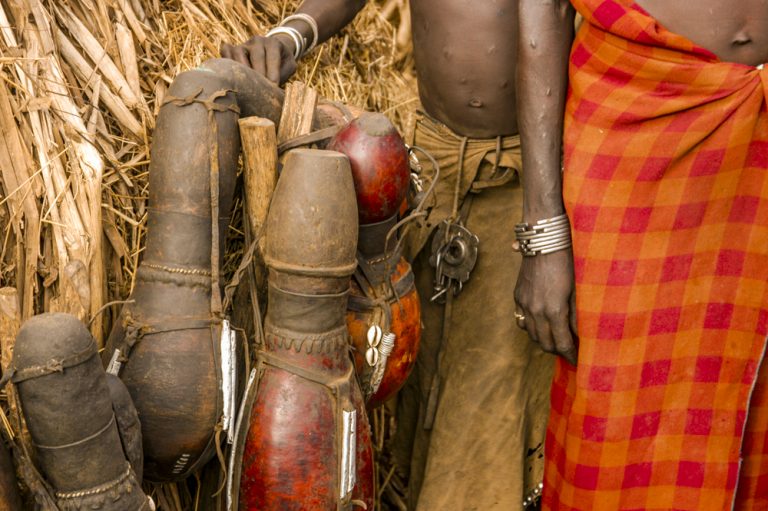
NWNL Rea Schopp, thank you very much for your time here, and good luck to you and your work as you help those cattle and human communities.
REA TSCHOPP There is still a lot of work to do.
NWNL Yes, there is, but it’s all worthwhile. Stay in touch.
Posted by NWNL on February 18, 2020.
Transcription edited and condensed for clarity by Alison M. Jones.
All images © Alison M. Jones. All rights reserved.
